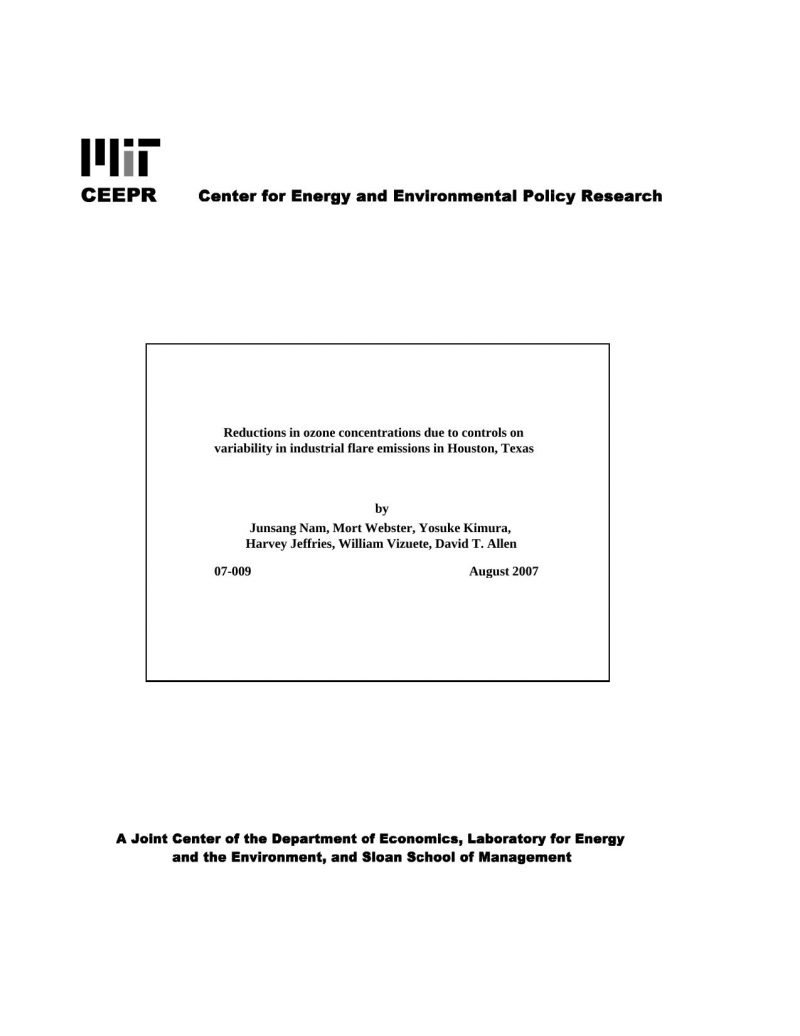Reductions in Ozone Concentrations Due to Controls on Variability in Industrial Flare Emissions in Houston, Texas
Junsang Nam, Mort Webster, Yosuke Kimura, Harvey Jeffries, William Vizuete and David T. Allen
07-Aug
High concentrations of ozone in the Houston/Galveston area are associated with industrial plumes of highly reactive hydrocarbons, mixed with NOx. The emissions leading to these plumes can have significant temporal variability, and photochemical modeling indicates that the emissions variability can lead to increases and decreases of 10-50 ppb, or more, in ozone concentrations. Therefore, in regions with extensive industrial emissions, accounting for emission variability can be important in accurately predicting peak ozone concentrations, and in assessing the effectiveness of emission control strategies. This work compares the changes in ozone concentrations associated with two strategies for reducing flare emissions in Houston, Texas. One strategy eliminates the highest emission flow rates, that occur relatively infrequently, and a second strategy reduces emissions that occur at a nearly constant level. If emission variability is accounted for in air quality modeling, these control scenarios are predicted to be much more effective in reducing the expected value of daily maximum ozone concentrations than if similar reductions in the mass of emissions are made and constant emissions are assumed. The change in the expected value of daily maximum ozone concentration per ton of emissions reduced, when emissions variability is accounted for, is 5-10 times the change predicted when constant (deterministic) inventories are used.



